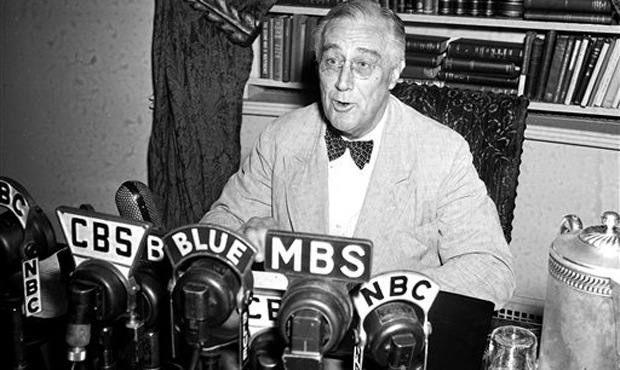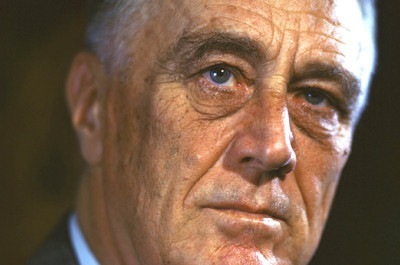Strong Leaders Initiate Action—Do Something!

Dateline: March 1933
“Old people were particularly vulnerable. Guaranteed pensions were a rarity in the 1930s; workers expected to save for their retirements or work until they died. But bank failures stole their savings, and unemployment their liveihoods….Some moved in with their children; millions simply suffered alone. [President] Franklin Roosevelt in March 1933 couldn’t know the extent of the calamity; no one could.” (H.W. Brands, Traitor to his Class)
Fast forward 87 years to today, where for the past five months a pandemic is running rampant around the world. COVID-19, the disease caused by the severe acute respiratory syndrome coronavirus 2 (SARS-CoV-2), has killed over 265, 000 people worldwide and created an estimated $12 trillion in economic loss. Official unemployment rates have tripled, countless small businesses are on the precipice of closing permanently, and food lines (notably in the United States) are bumper to bumper for miles.
National leaders have reacted in various ways to the global crisis. In many instances, they’ve behaved spasmodically; some leaders have sat in stunned impotence, denying there’s a problem. Others have chased their tails, trying desperately to address such problems as lack of testing kits, protective equipment for healthcare workers and ventilators for hospitals. A few national leaders have acted pro-actively and are starting to show positive results in both flattening the infamous Covid-19 curve and slowly re-opening their stalled economies.
When Franklin D. Roosevelt assumed office on March 4, 1933, he knew he had a huge problem on his hands. The Great Depression was in full swing. On top of an estimated national unemployment rate of 25 percent (much higher in certain parts of the country), bank failures, and growing despair among Americans, FDR realized that social unrest among males posed a potential problem. (Take a moment to read about the CCC, the United States’ greatest public relief program.)
In what’s called the Hundred Days, FDR unleashed a battery of legislation through Congress. And almost nine decades later, Americans are still benefitting from FDR’s decision to take action during one of the country’s darkest periods. Below are examples of the 15 pieces of legislation approved by Congress during this period.
- Banking Act (bolstered later by the Glass-Steagall Act)
- Economy Act (to control spending)
- Civilian Conservation Corps (see above link)
- Securities Act (to disclose stock issues)
- Agricultural Adjustment Act (government to guarantee sector’s health)
- Tennessee Valley Authority (as a development agency for electrical power)
- National Industrial Recovery Act (pumped billions into public works projects)

The speed with which this legislation was accomplished is remarkable, and done in half of the scheduled session of the legislature. Applying this to contemporary U.S. politics is alien in thought and design. Sure, FDR had his detractors, including those who believed that he was amassing too much power and that the state was encroaching upon the personal lives of Americans. Yet successive generations have benefitted from FDR’s action-oriented vision.
Franklin Delano Roosevelt saw a problem and a need in 1932. And he did something, with the assistance of competent advisors and cabinet secretaries, when he took office in March 1933.
If you’re a leader, regardless of level and industry, and see a problem, big or small…
Do something!
We have always held to the hope, the belief, the conviction that there is a better life, a better world, beyond the horizon. — Franklin D. Roosevelt
Articles from Jim Taggart
View blog
The leadership field—and its cousin management—has an over abundance of information, from books, per ...

The following 10 lessons are not aimed at just those who wish to move into managerial positions; the ...

In my last post we looked at The Five Levels of Teams: Where Are You on the Team Performance Curve? ...
Related professionals
You may be interested in these jobs
-
Préposé(e) au service alimentaire
Found in: Talent CA C2 - 3 days ago
CIUSSS du Centre-Ouest-de-l'Île-de-Montréal Sainte-Thècle, Canada TPO - Temps partiel occasionnelMandat · Tu es travaillant, énergique et tu aimes travailler en équipe? Nous recherchons présentement des préposés au service alimentaire pour travailler dans nos cuisines et cafétérias. · Le CIUSSS MCQ est une équipe de plus de êtres humains uniques qui collaborent ensemble po ...
-
Ergothérapeute - CRDITED de Montréal
Found in: Talent CA C2 - 2 days ago
CIUSSS du Centre-Ouest-de-l'Île-de-Montréal Montreal, Canada Contrat temporaireBâtir une carrière. Sépanouir. Changer des vies... Ça commence ici. · Mission · Nous croyons en la valeurinestimable de chacun et chacune dentre nous. Nous savons quensemble, nous pouvons tous et toutes changer les choses. Le Centre intégré universitaire de santé et de services ...
-
sheet metal worker
Found in: Talent CA 2 C2 - 3 days ago
Blueline Sheet Metal and Manufacturing Ltd. Surrey, CanadaEducation: · Expérience: · Education · Secondary (high) school graduation certificate · Tasks · Operate metalworking machines to cut, punch, drill, shape or straighten sheet metal · Grind and buff seams, joints and rough surfaces · Cut materials using power tools or by hand · R ...



Comments